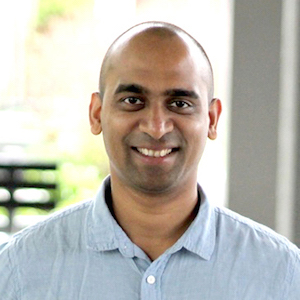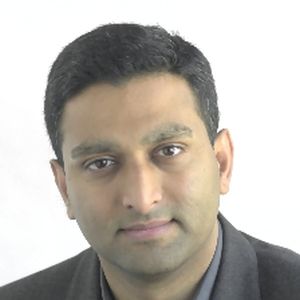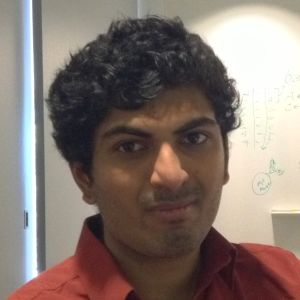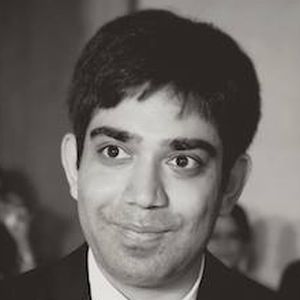Computational Time of Flight @ ICCV 2015

Time-of-flight (ToF) cameras are fast becoming the method of choice for depth sensing in a wide range of applications. Several low cost and compact ToF systems are available as commodity devices, including the Microsoft Kinect and the Intel SoftKinectic sensors. In addition to depth recovery, ToF cameras are also being repurposed for recovering a variety of scene information, such as reflectance properties and intrascene light transport. This tutorial introduces our audience to recent advances made in the field of ToF imaging, including a discussion on the core challenges faced by ToF cameras and existing solutions, novel applications such as transient imaging, measuring depths around the corners and estimating fluorescence and material properties.
Schedule
- 14:00-14:45
- Overview of the ToF revolution [Slides] [A. Kadambi]
- 14:45-15:45
- Core challenges faced by ToF cameras [Slides] [M. Gupta]
- 15:45-15:55
- Break
- 15:55-16:15
- Computational photography with ToF cameras [Slides] [A. Kadambi]
- 16:15-17:00
- Signal processing with ToF cameras [Slides] [A. Bhandari]
- 17:00-17:10
- Break
- 17:10-17:40
- Next-generation ToF cameras: microwaves, wifi and audio and beyond [Slides] [A. Bhandari]
- 17:40-18:00
- Conclusion and Q&A panel [M. Gupta]
Materials
At this moment, a preliminary schedule is currently available. Slides will be available shortly before the tutorial. To get a sense of topics, the reader may consult an earlier tutorial at SIGGRAPH.
Thank you, and looking forward to seeing you in Santiago on the 11th!
--- the organizers
Organizers

Mohit Gupta
Assistant Professor, University of Wisconsin, Madison
Mohit Gupta will start as an assistant professor in the CS department at the University of Wisconsin-Madison in January '16. He is currently a research scientist in the CAVE lab at Columbia University. He received a B.Tech. in computer science from Indian Institute of Technology Delhi in 2003, an M.S. from Stony Brook University in 2005 and a Ph.D. from the Robotics Institute, Carnegie Mellon University in 2011. His research interests are in computer vision and computational imaging. His focus is on designing computational cameras that enable computer vision systems to perform robustly in demanding real-world scenarios, as well as capture novel kinds of information about the physical world. Details can be found here.

Ramesh Raskar
Associate Professor, MIT Media Lab
Ramesh Raskar is an Associate Professor at MIT Media Lab. Ramesh Raskar joined the Media Lab from Mitsubishi Electric Research Laboratories in 2008 as head of the Lab's Camera Culture research group. His research interests span the fields of computational photography, inverse problems in imaging and human-computer interaction. Recent projects and inventions include transient imaging to look around a corner, a next generation CAT-Scan machine, imperceptible markers for motion capture (Prakash), long distance barcodes (Bokode), touch+hover 3D interaction displays (BiDi screen), low-cost eye care devices (Netra,Catra), new theoretical models to augment light fields (ALF) to represent wave phenomena and algebraic rank constraints for 3D displays(HR3D).

Achuta Kadambi
MIT Media Lab
Achuta Kadambi works in the area of physics-based computer vision. The intent is to overcome traditional limitations of computer vision, by leveraging joint design of optical capture and computational processing. Kadambi has taught courses on computational photography and light transport at SIGGRAPH and co-instructed a course at MIT on inverse problems in imaging. Previously he was a research intern at Microsoft Research in Seattle WA and Mitsubishi Electric in Cambridge MA.

Ayush Bhandari
Researcher, MIT Media Lab
Ayush Bhandari is currently a researcher at the MIT. Before moving to MIT, he has held various research positions starting with INRIA-Rennes, France followed by NTU Singapore and then, CUHK Hong Kong with the most recent appointment at EPFL Switzerland where he first worked at Laboratory of Audio-Visual Communications (LCAV) and then, the Biomedical Imaging Group (BIG). His research interests include sampling and approximation theory, inverse problems linked with computational imaging. He was recipient of the Best Student Paper Award at IEEE International Symposium on Signal Processing and Its Applications (2007) and the Best Paper Award at the IEEE Systems and Information Engineering Design Symposium (2007).